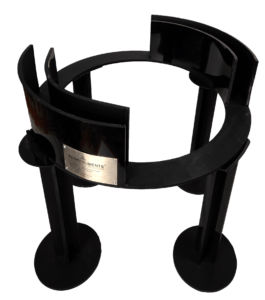
- Laboratory
- Medical research
- Elevated plus experiment maze
- VJ Instruments

- Company
- Products
- Catalogs
- News & Trends
- Exhibitions
Elevated plus experiment maze VJOFS-01Mfor animal researchfor behavioral researchfor rats
Add to favorites
Compare this product
Characteristics
- Type
- elevated plus
- Applications
- for animal research, for behavioral research
- Animal type
- for mice, for rats
Description
The Open Field Maze (OFM) was initially developed in 1934 as a test to measure emotionality in rodents. Developed by Calvin S. Hall, the open field test is an experimental test used to assay general locomotor activity levels, anxiety, and willingness to explore in animals (usually rodents) in scientific research. It has one of the most widely used measures of behavior in animal psychology. OFM consists of a wall-enclosed area that is of sufficient height to prevent the subject from escaping and is divided into 2 zones, inner zone that spans in center and outer zone that spans towards wall of the maze. Greater time spent in the outer zones of the maze is recorded as increased thigmotaxis and is indicative of amplified anxiety-related behavior.
Catalogs
Open Field & Novel Object
3 Pages
Related Searches
- Analysis medical software
- Windows medical software
- Tracking software
- Test software
- On-premise software
- Research software
- Experiment maze
- Mice experiment maze
- Rat experiment maze
- Animal research experiment maze
- Veterinary software
- Software for the pharmaceutical industry
- Operant behavior system
- Small animal operant conditioning system
- Aid software
- Animal research software
- Rat operant behavior system
- Animal research operant behavior system
- Behavioral research experiment maze
- Elevated plus experiment maze
*Prices are pre-tax. They exclude delivery charges and customs duties and do not include additional charges for installation or activation options. Prices are indicative only and may vary by country, with changes to the cost of raw materials and exchange rates.








